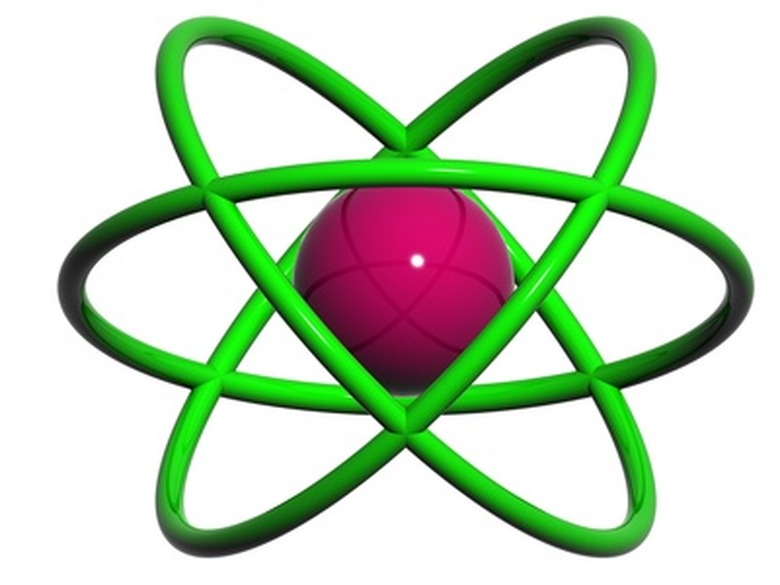How To Build An Atom Science Project
Building a model atom is an easy way for students to learn some of the basic principles of chemistry. An atom has three parts: protons, neutrons and electrons. The number of each of these determines what element an atom represents. A trip to your local craft store and a rudimentary understanding of the Periodic Table of the Elements is necessary to represent an atom. The smaller the atomic number of the element, the easier it will be to construct a model of the atom.
Step 1
Paint the particles different colors to distinguish them. Make six of the 2-inch balls one color to represent protons and the other six 2-inch balls another color to represent neutrons. Paint the 1-inch balls a third color, and they will represent the electrons. Electrons are much smaller than protons and neutrons, but it would not be feasible to create the model to scale.
Step 2
Label the protons with a "plus" symbol and the electrons with a "minus" symbol. This corresponds to the positive charge that all protons have and the negative charge each electron has. Neutrons do not have a charge.
Step 3
Glue the protons and neutrons together to form the nucleus. They should be jumbled together in the tightest configuration possible, with each proton coming in contact with at least one neutron. This is a carbon-12 atom, a specific isotope. Carbon-13 would have an extra neutron, and carbon-14 would have two additional neutrons.
Step 4
Cut the stiff wire into an 18-inch length and a 36-inch length. Slide two electrons over the 18 inch length and the remaining four electrons on the 36-inch length. Bend the wires to make a circle, and connect their ends together using duct tape. Equally space the electrons on their orbits, since their charges repel each other in a real atom.
Step 5
Connect the electron orbits to the nucleus by inserting four thin wooden dowels into the nucleus at 90 degree angles to each other to form a cross shape, and gluing the circular wires to the dowels. The smaller orbit represents the first energy level, which can hold no more than two electrons, and the larger orbit is the second energy level, which can hold no more than eight electrons. This is the Bohr model for electrons, which is not a perfect representation since it is impossible to accurately determine the location of a single atom's electron.
Things Needed
- 12 2-inch diameter foam balls
- 6 1-inch diameter foam balls
- 3 colors of paint
- Glue
- Black marker
- Stiff wire
- Duct tape
- 4 1/4-inch wooden dowels
TL;DR (Too Long; Didn't Read)
Try making models of neon, calcium or chlorine by using more protons, neutrons and electrons.
Cite This Article
MLA
Leenhouts, Doug. "How To Build An Atom Science Project" sciencing.com, https://www.sciencing.com/build-atom-science-project-7795701/. 24 April 2017.
APA
Leenhouts, Doug. (2017, April 24). How To Build An Atom Science Project. sciencing.com. Retrieved from https://www.sciencing.com/build-atom-science-project-7795701/
Chicago
Leenhouts, Doug. How To Build An Atom Science Project last modified August 30, 2022. https://www.sciencing.com/build-atom-science-project-7795701/
